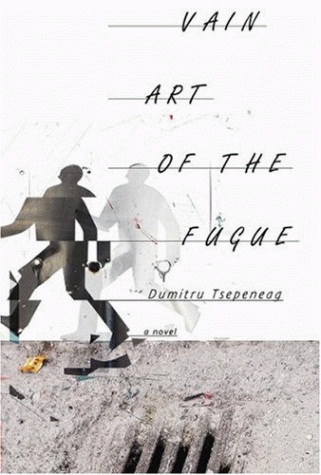Book Insider: Vain Art of the Fugue, by Dumitru Tsepeneag

Central question: Can fiction be music?
The fugue is a baroque-era musical convention in which elements are mixed in such a way that they cannot be recognized. As a compositional strategy for the novel, the fugue reifies the postmodern notion that identity isn’t an essence, but a series of relationships.
In Vain Art of the Fugue, a nameless man with flowers attempts to take a bus to the station, and his failure to accomplish this simple task is reimagined every chapter. The bus crashes, or the driver throws him off, or throngs of cyclists block his path, or else he finds himself in jail, for no apparent reason, guarded by surprisingly laconic cops. Sometimes he disappears completely, or just as often ends up at the beach. It is Tsepeneag’s great and strange accomplishment that the novel doesn’t suffer from this anarchy; it profits on its own unique terms. The bus keeps bashing through traffic, but never gets to where it’s going; the driver keeps screaming; the pig in the courtyard of the man’s apartment complex is perpetually slaughtered; and no one picks up Magda—the woman at the station—or differentiates her from Maria, the man’s roommate.
Because it’s tricky to determine the limits of possibility in this world, it helps to contrast the fortunes of the pig and the fish. The pig is repeatedly slaughtered in the courtyard, while three old women—the Fates?—collect its blood. In other words, the pig’s destiny stays the same no matter what else changes in the novel. But the fish, on the other hand, never stops transforming. The things of the world are both doomed and perpetually transformed.
The plot is a shuffle of its elements, and Tsepeneag treats characters as sets of accidents whose selves are a flux of perpetual creation. The man with flowers appears in both first and third person, often in the same chapter. He is both humble and aggressive, talkative and conscious of the limits of speech, dismally aware that he will fail and continuously hopeful he will not. Magda, Maria, the bus driver, and all the other characters are treated with this same generosity. Tsepeneag expands the quarry of the human personality into something like its actual dimensions.
Tsepeneag’s deft translator, Patrick Camiller, deploys a language of slyly measured elegance.
“As you can see, madam, words are getting staler and staler… idiots have used them like so many wheelbarrows… loaded them up with all kinds of idiotic confessions, with all these ideas, each more stupid than the last… in short, with what people call messages.”
The net result of all this play is that Vain Art of the Fugue is more mysterious at the end than it is at the beginning. It is a work of singular invention and joy, a successful experiment in every aspect of the novel, especially delight.
With smooth transitions and an easy manner, Tsepeneag offers a playful, lively literary fugue with considerable appeal. It's a small little game, but well done, a nice mix of real and surreal – and not so long as to get enervating. Not your usual story, but a successful demonstration of what else can be done with the form.













